The coast of north Yorkshire surrounding the town of Whitby is a mecca for Jurassic marine fossils.
Virtually any section of the coast from Staithes to Ravenscar will offer up a bounty of ammonites and other wonderfully preserved fossils.
This website ---> The UK Fossils Network contains a wealth of information on each of the access points along the coast.
It would be pointless to duplicate the monumental effort that has gone into this guide to the UK.
I applaud them and thank them for the guidance they provided.
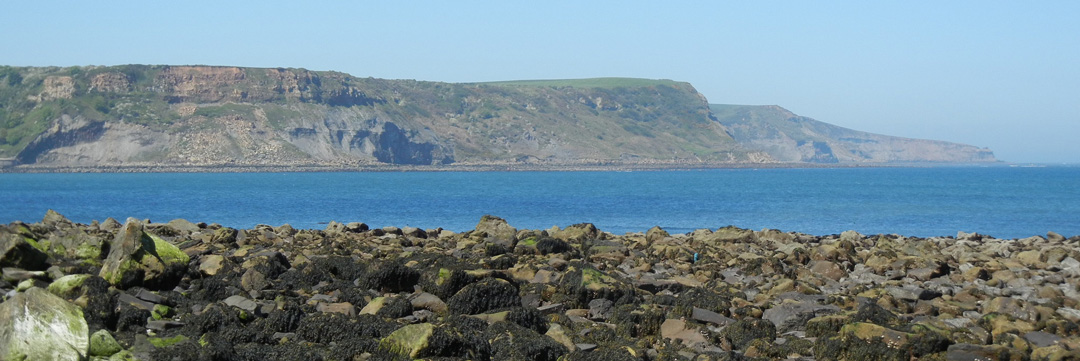
The west end of Runswick Bay with a view of the coast toward Staithes, as seen from the east end of the bay.
A few comments, though on the entire Yorkshire coast...
Item #1: Cliffs
Each of these localities is along steep, unstable and rapidly eroding cliffs.
It is NOT necessary to dig or otherwise search in the cliff faces.
Everything we found with one exception was in the rubble on the beach or scree at the base of the cliffs.
It is not just a cliche, it is the truth.
Item #2: Tides
The tides are your friend and foe.
If not for the action of the sea, the fossils would not be washed out of the cliffs onto the shore.
However, during high tides, the sea may cover the beaches and make access to the rockier areas dangerous and impassable.
Pay attention to the tides.
Item #3: Nodules
The better preserved ammonite fossils are contained in hard rounded nodules.
Train your eyes to look for the dull grey muddy looking grey nodules, usually spherical or ovate in shape.
They drop out of the cliffs and the sea tosses them about, wearing off the outer edges of matrix, exposing the ammonites within.
Observing the color and texture of the sea-worn nodules will provide a guidepost for finding fresher ones as
the freshest ones will not likely show any signs of what is within.
The harder, speckly grey nodules did seem to have much in them. They have a funny smell when you smack them with the hammer.
The town of Runswick Bay, about 9 miles from Whitby as seen from the beach, looking west.

The car park is up the ramp to the left, not far up the hill.
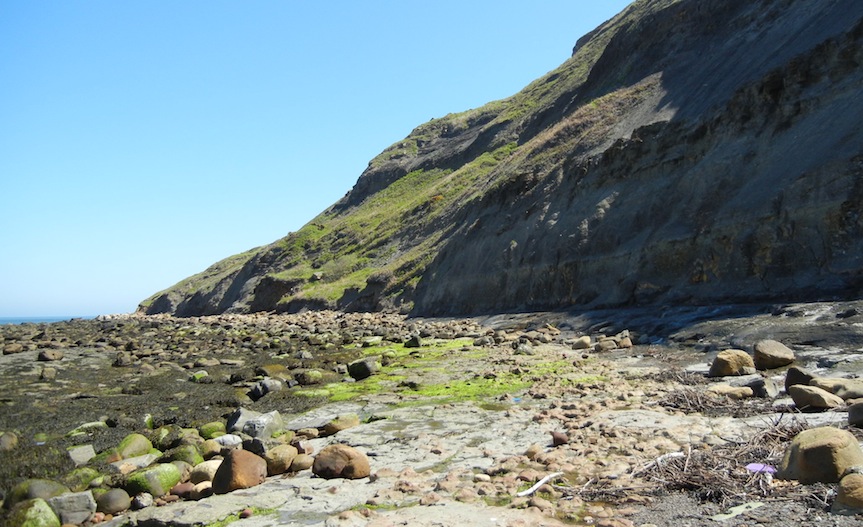
Our best finds came from the beach rubble between the east end of the beach and the corner.
Around the corner is Kettleness.
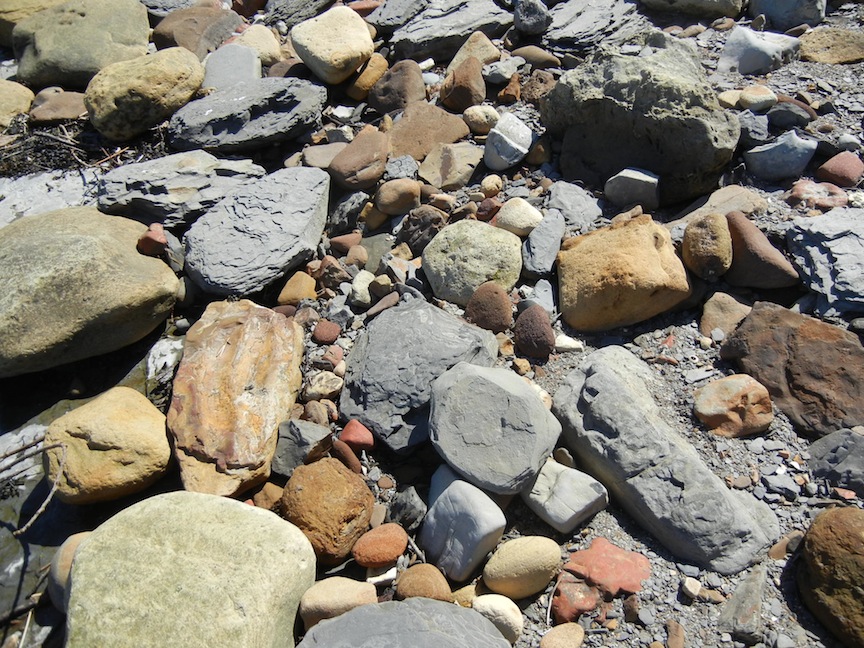
This is typical of the rubble on the beach. Keep looking for the grey nodules.
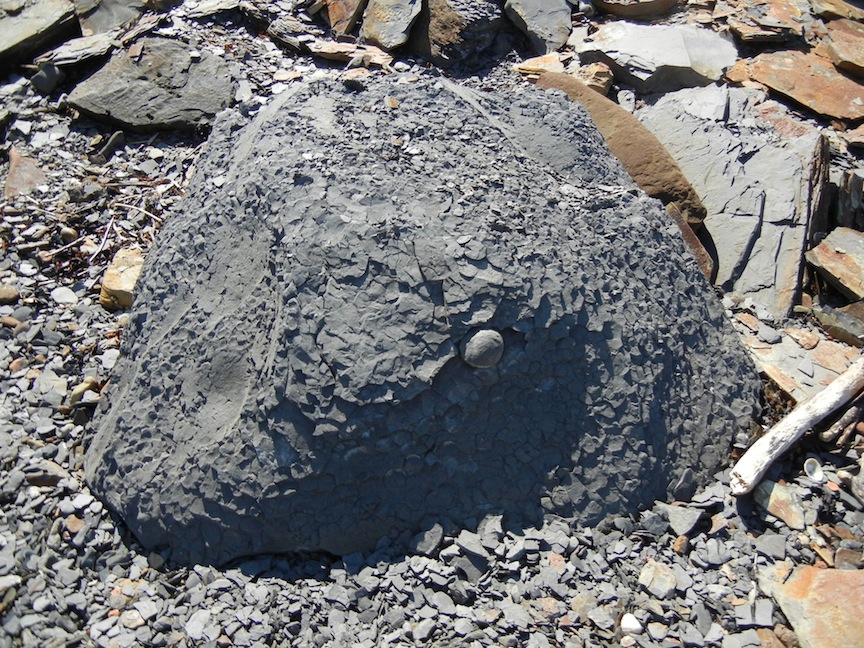
Here is a nodule in situ within a fallen block of shale.
The next tide will likely reduce this block to chips and scatter the nodule into the beach rubble.
I saved it from that cruel fate!
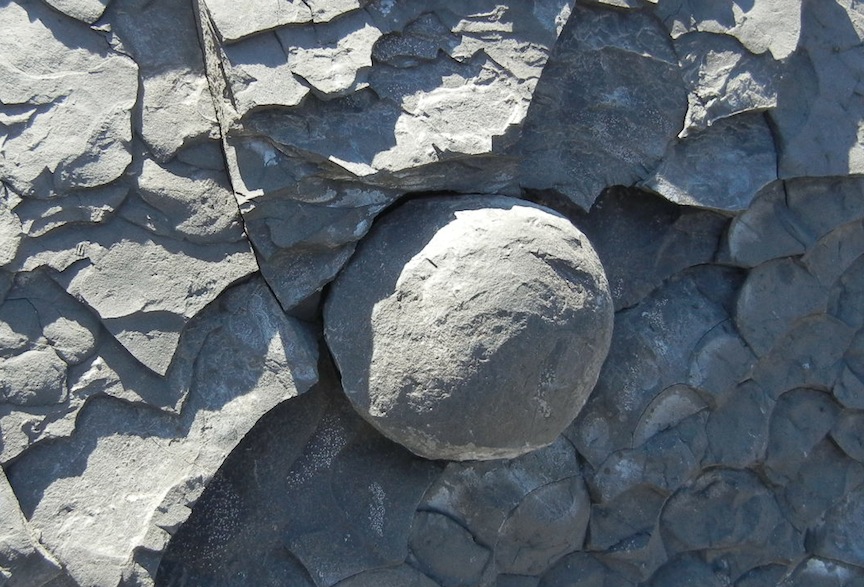
The nodule shows some of the ammonite within.

Other fossils are also to be found. This excellent belemnite was just lying there on the beach.
This too, will become part of the shingle in a matter of days.
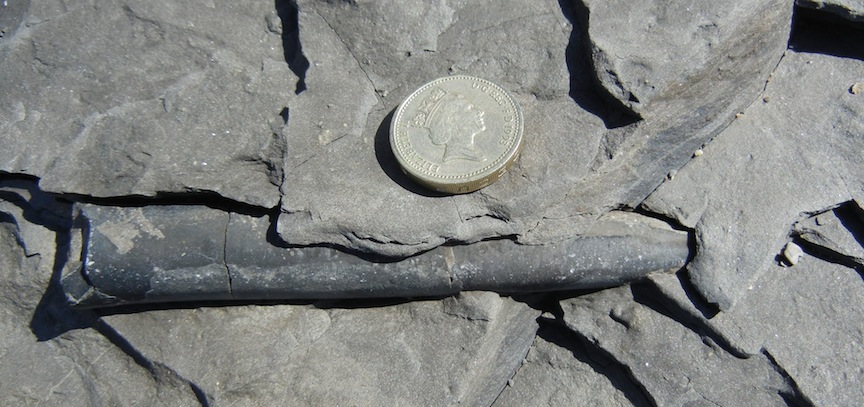
I found two similarly sized belemnites, that day.
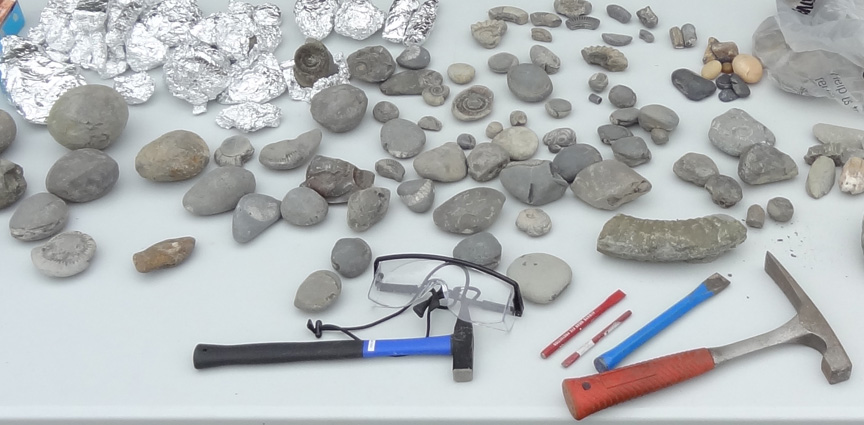
Runswick Bay was our most productive location for ammonites. Most of the nodules on this table
were found in an afternoon at the east end of the bay.
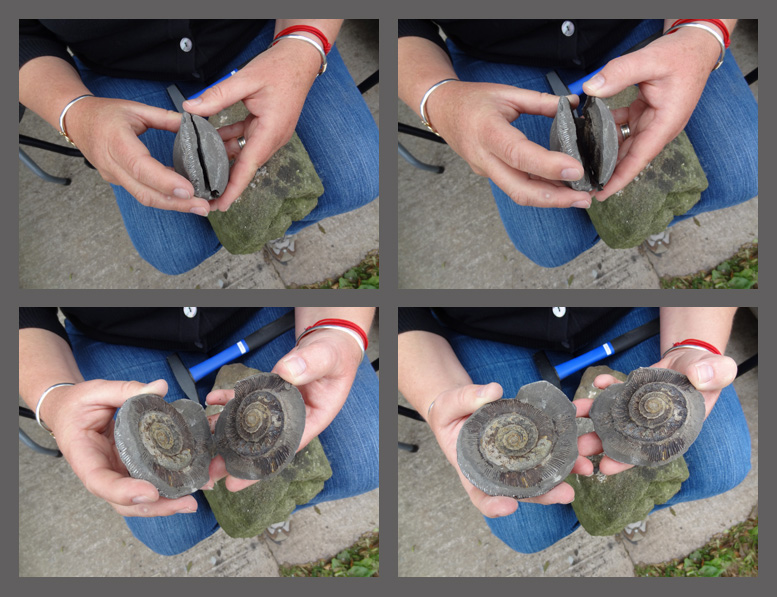
We waited until we were at our friend's house in Somerset to split most of the nodules.
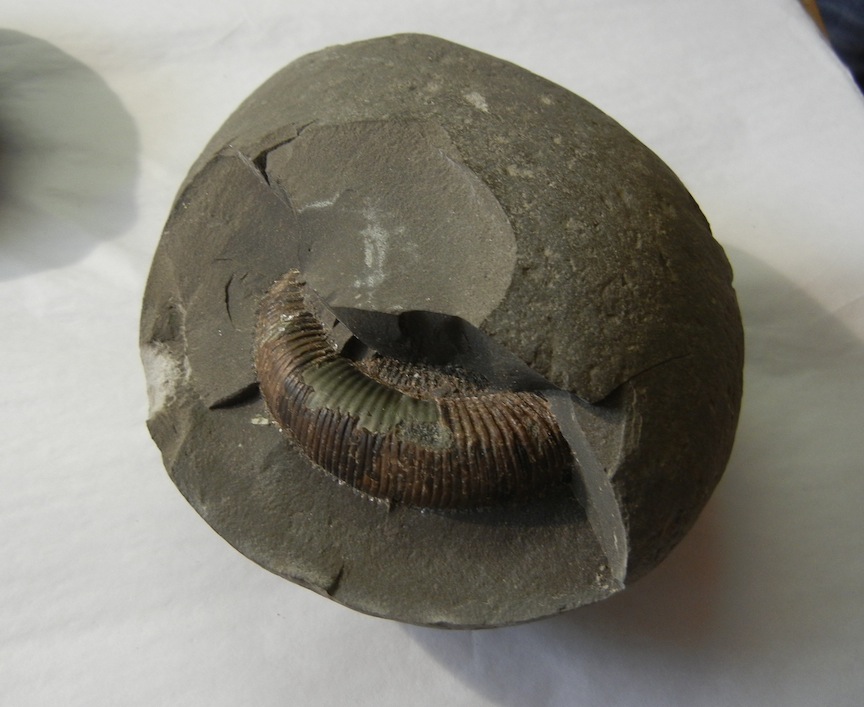
This nodule was found in the rubble.
It is quite inconspicuous if your eye is not tuned to the color and shape.
I dropped it from shoulder height onto a hard rock and out popped the ammonite.
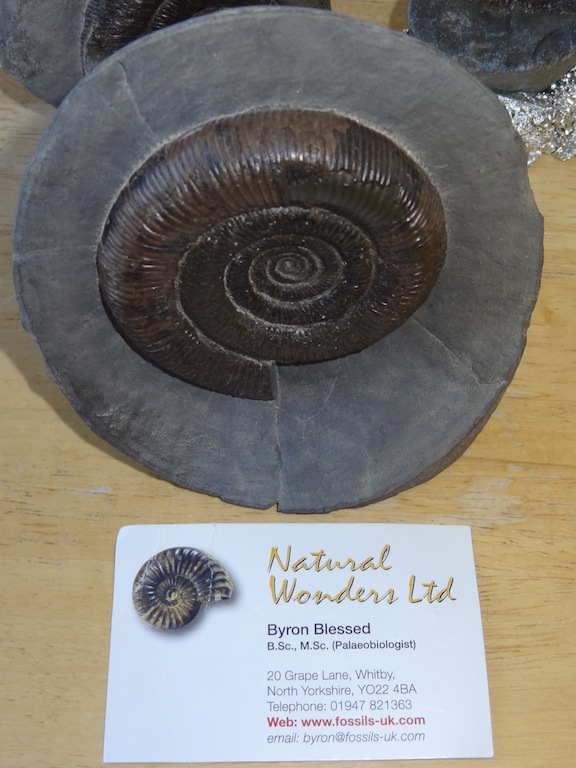
I took it back to Whitby and had Byron Blessed clean it for me as I was afraid to whack it with the hammer!
My thanks AGAIN to the The UK Fossils Network for their hot tips!
Thanks also to Byron Blessed of Natural Wonders and his father warm welcome and for the timely preparation work.
Questions? E-Mail me: tngray@nautiloid.net
Other Sites